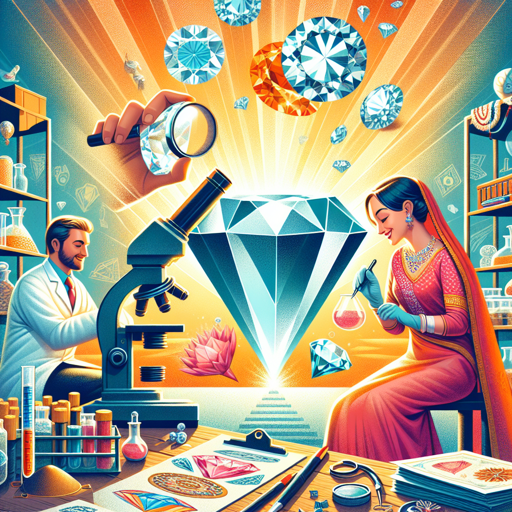The Lure of Diamonds: A Journey through Time and Science
Unearth the reasons behind mankind's enduring fascination with diamonds, from its scientific origins to its cultural significance.

Introduction
There’s something inherently captivating about diamonds. For centuries, these glittering gemstones have held a special place in our hearts and minds. But what makes diamonds so attractive to us? This article seeks to explore the allure of diamonds from both a scientific and cultural perspective.
The Science Behind the Sparkle
Diamonds are not just beautiful; they’re a geological marvel. Formed deep within the Earth’s mantle under conditions of intense heat and pressure, diamonds are brought to the surface through volcanic eruptions. Their unique crystal structure gives them their characteristic hardness and brilliance.
The Crystal Structure
Diamonds are made of carbon atoms arranged in a specific way. Each carbon atom is bonded to four other carbon atoms in a tetrahedral structure. This strong covalent bonding gives diamonds their incredible hardness, making them the hardest known natural substance on Earth.
The Diamond’s Journey
The journey of a diamond from deep within the Earth to the surface is a fascinating story. Diamonds form over 1 billion years ago, deep under the Earth’s crust. They are then brought to the surface by deep-source volcanic eruptions. These eruptions create ‘kimberlite pipes’, which are the primary source of diamonds.
| Diamond Formation | Description |
|---|---|
| Stage 1: Formation | Diamonds form deep within the Earth’s mantle under conditions of high pressure and temperature. |
| Stage 2: Transportation | Diamonds are brought to the surface by deep-source volcanic eruptions. |
| Stage 3: Discovery | Diamonds are found in the rock material (kimberlite) that forms these pipes. |
The Cultural Significance of Diamonds
Diamonds have been revered by cultures around the world for centuries. They have been used as religious icons, symbols of power and wealth, and expressions of love and commitment.
Diamonds in Ancient Cultures
In ancient times, diamonds were believed to have supernatural powers. The ancient Greeks believed that diamonds were the tears of the gods, while the ancient Romans thought that they were splinters from falling stars.
The Diamond Engagement Ring
The tradition of giving a diamond engagement ring dates back to the 15th century. Archduke Maximillian of Austria gave the first diamond engagement ring to Mary of Burgundy in 1477. This tradition has since become a universal symbol of love and commitment.
“A diamond is forever.” - De Beers
This quote from a De Beers advertising campaign perfectly encapsulates the enduring allure of diamonds. Their unbreakable nature makes them the perfect symbol of eternal love.
Conclusion
The allure of diamonds is a combination of their scientific properties and the cultural significance we have attached to them. From their formation deep within the Earth to their role as symbols of love and commitment, diamonds have a lure that is truly timeless.
For more information about the formation and cultural significance of diamonds, visit The Gemological Institute of America.